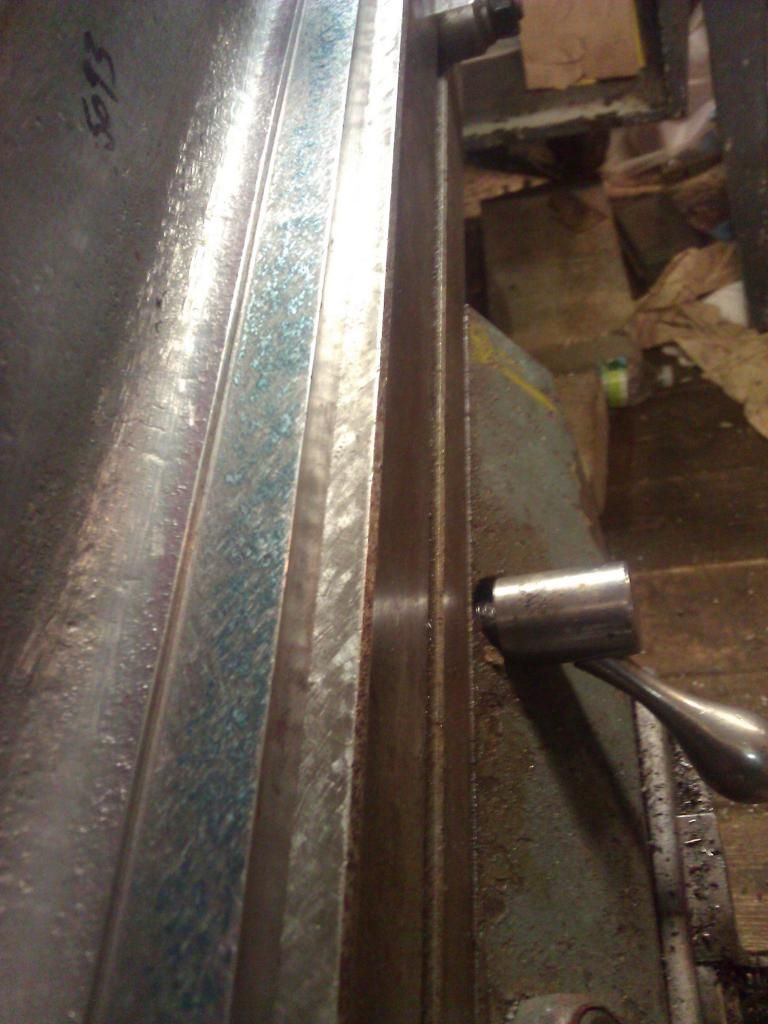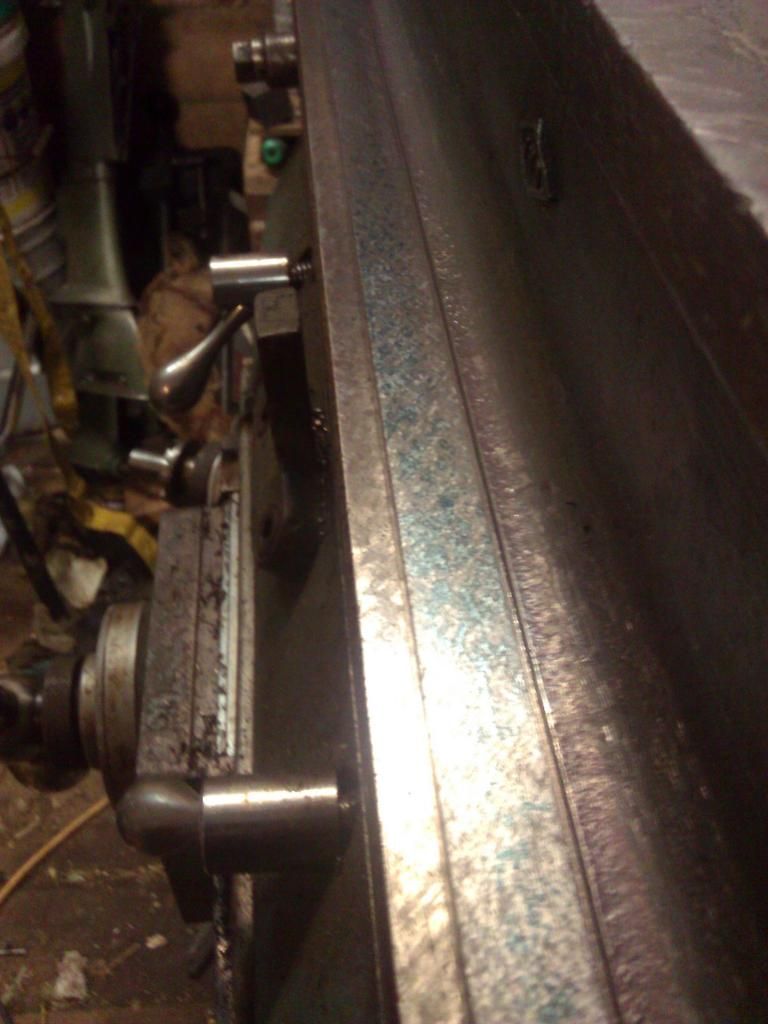I'm building a CNC mill from scratch. I've done some research and read a few books. Sitting on my desk right now is CNC Machining handbook by Alan Overby.
I have a few ideas on how I want to design it but am unsure. I would like to do some casting for the base but not in the cards right now. Unless I contract a local foundry(until I get my furnace made).
Ideas and sajustions on how to go about this?
Thread: CNC from scratch
Results 1 to 19 of 19
-
09-08-2012, 07:12 PM #1
 Registered
Registered
- Join Date
- Feb 2012
- Posts
- 0
CNC from scratch
-
09-09-2012, 12:48 AM #2
 Member
Member
- Join Date
- Apr 2004
- Posts
- 5951
What do you mean by "from scratch"? Are you planning to design your own control system, wind your own motors, thread your own screws, smelt your own iron? I suppose it can all be done, but unless you're on a desert island or something, one has to ask why.
On the other hand, I'm a fan of Dave Gingery's books too... The Charcoal Foundry
Andrew Werby
www.computersculpture.com
-
09-09-2012, 02:31 AM #3
 Registered
Registered
- Join Date
- Feb 2012
- Posts
- 0
Well, I meant design from scratch. Aside from wanting to cast my frame. What is the best linear track for the Z axes? I have some 20X675mm round track coming in for my X axes, should I get the same for the Y? For the drive I was thinking acme thread with servo drives. But I'm not sure how exactly this will be set up. I know once I get to my new place, it will be set up to be permanently set up.
-
09-09-2012, 02:50 AM #4
 Member
Member
- Join Date
- Apr 2004
- Posts
- 5951
[I'd say it's better to concentrate on working out all the details of how things are going to fit together before worrying about installing it permanently.]
Andrew Werby
www.computersculpture.com
-
09-09-2012, 03:11 AM #5
 Registered
Registered
- Join Date
- Feb 2012
- Posts
- 0
Oh I know, and besides my wife and I have yet to buy our house so it maybe sometime before it is installed permanently. My shop right now is a 11X11' horse stall in our old barn. It dose the job.
I was thinking about making a rectangle foot print for the mill, with a triangle shaped back for stability. The side profile would look like half an arrow. I'm hoping to install a 4th axes lather on down the road.
-
09-09-2012, 12:20 PM #6
 Community Moderator
Community Moderator
- Join Date
- Mar 2003
- Posts
- 35494
What do you plan on cutting? Wood? Metals?
Gerry
UCCNC 2017 Screenset
http://www.thecncwoodworker.com/2017.html
Mach3 2010 Screenset
http://www.thecncwoodworker.com/2010.html
JointCAM - CNC Dovetails & Box Joints
http://www.g-forcecnc.com/jointcam.html
(Note: The opinions expressed in this post are my own and are not necessarily those of CNCzone and its management)
-
09-10-2012, 12:42 AM #7
 Registered
Registered
- Join Date
- Feb 2012
- Posts
- 0
Most of my work will be metal, and some wood. I'm looking at maybe 40% Alum- 40%Steal- and 20%wood/plastic.
So I know I'm going to need a ridged frame.
-
09-10-2012, 05:04 PM #8
 Registered
Registered
- Join Date
- Feb 2012
- Posts
- 0
What kind of stepper motors should I look at and which should I keep away from? Being one of my first builds I'm not looking to spend more then an arm and a leg. I've looked around a bit and I've seen some that are ridicules in price and some that are crazy low. So I'm just looking for some input from the guys who have played with these and can advise on this. Thanks for your time and reading this!
-
09-10-2012, 09:44 PM #9
 Member
Member
- Join Date
- Apr 2004
- Posts
- 5951
Once you've cast your frame and assembled it with the screws and slides, you'll be in a much better position to assess the torque requirements of the motors. I'd wait until then before shopping for them. At this point, lacking any specifics about your system, there's no way we could give you more than a wild guess.
Andrew Werby
www.computersculpture.com
-
10-25-2012, 06:53 PM #10
 Registered
Registered
- Join Date
- Feb 2012
- Posts
- 0
two things. has anyone heard of 8020.net?
and lastly, how rigid is the gantry style mill compared to the other types?
I was thinking about framing it out with the 80/20 then once finished TIG weld for extra strength.
Thanks for your time and help!
James
-
10-25-2012, 08:24 PM #11
 Member
Member
- Join Date
- Apr 2004
- Posts
- 5951
[That might warp it more than it would strengthen it. If you're still intending to cut metals with this build, your original idea of casting the frame sounded better. I'd say go with a fixed bridge and moving table design, not a moving gantry.]
Andrew Werby
www.computersculpture.com
-
10-27-2012, 04:26 AM #12
 Registered
Registered
- Join Date
- Jan 2009
- Posts
- 123
You would be better off using solid steel as the frame instead of 80/20. It just doesn't have enough strength for machining steel. You can go with a stiff alum alloy, like 7075, but steel is cheaper (even with higher shipping costs because of the weight). Ideally you can drill and tap solid steel which would be perferred over TIG welding because once you weld it, you can't re-adjust it to make sure its straight and true, especially if you want good tolerances. Once you got it all adjusted then you can weld it.
80/10 also has rounded corners (Its extruded not machined). This can make it difficult to weld it without excessive warpage. However 80/20 might be useful for building a stand for your machine.
-
10-28-2012, 05:50 AM #13
 Registered
Registered
- Join Date
- Feb 2012
- Posts
- 0
I came across some 20mm linier rail with pellow blocks cheap. To help with basic knowledge of my first build, maybe I should put together a router. Probroly best not to start off big on the first. Maybe better to retrofit my Bridgeport clone? After I scrape and alone the ways. After I finish scraping my lathe.
Anyone ever build a cnc lathe?
Thanks for helping and reading my ramblings.
-
10-28-2012, 09:18 PM #14
 Member
Member
- Join Date
- Apr 2004
- Posts
- 5951
The router would be a simpler project, with a lot more examples to draw from. I'd say hold onto your manual Bridgeport clone without tearing it apart; it will come in handy for building your router. And scraping is really something that you have to be an expert at, if you want to make your machines better and not worse.
Andrew Werby
www.computersculpture.com
-
10-29-2012, 01:44 AM #15
 Registered
Registered
- Join Date
- Feb 2012
- Posts
- 0


been working on my old Logan lathe all summer making sure I get it right.
these are of the Logan lathe bed flipped upside down on my mill. Makes it easier to move it around to where I need it.
-
11-11-2012, 04:35 AM #16
 Registered
Registered
- Join Date
- Feb 2012
- Posts
- 0
Looking for some good places to get lead screws. Any ideas?
Thanks for all your input guys!
James
-
11-14-2012, 04:19 PM #17
 Registered
Registered
- Join Date
- Jan 2009
- Posts
- 123
Roton sells inexpensive lead and ballscrews, but they aren't very precise. For precision screws you will need to go to Nook, THK, or other vendors and they are not cheap. Expect to pay around $1K to $1.5K USD for a machined precision ballscrew (screw + nut). Note that precision screws are hardened which will make machineing difficult.
Roton Products, Inc. Quality Lead Screws and Nuts for Power Transmission
The roton screws are intended for basic processing equipment not for CNC designs. I believe the roton screws have an error of about 3 to 10 mills per inch.
-
11-17-2012, 10:18 PM #18
 Registered
Registered
- Join Date
- Feb 2012
- Posts
- 0
thanks for the info!
What dose everyone think of rack and pinon for this? I'm only cutting wood and other soft materials.
I'm thinking fixed gantry but I know with a mobile gantry I will get more cutting surface.
Rack and pinon would be easier on the wallet from what I've read. Is this correct?
-
11-18-2012, 06:28 PM #19
 Registered
Registered
- Join Date
- Jan 2009
- Posts
- 123
Similar Threads
-
CNC from scratch, need help.
By floodx in forum DIY CNC Router Table MachinesReplies: 5Last Post: 09-19-2011, 01:45 PM -
First build from scratch
By Sockles in forum DIY CNC Router Table MachinesReplies: 7Last Post: 08-23-2011, 11:29 PM -
CNC Lathe from Scratch
By mackeym in forum Vertical Mill, Lathe Project LogReplies: 85Last Post: 06-02-2010, 12:20 AM -
Starting from scratch
By Superduper2010 in forum DIY CNC Router Table MachinesReplies: 15Last Post: 03-27-2010, 02:52 AM -
Learning from scratch
By Kitch02 in forum CNC (Mill / Lathe) Control Software (NC)Replies: 2Last Post: 03-22-2005, 01:00 PM



 Reply With Quote
Reply With Quote

